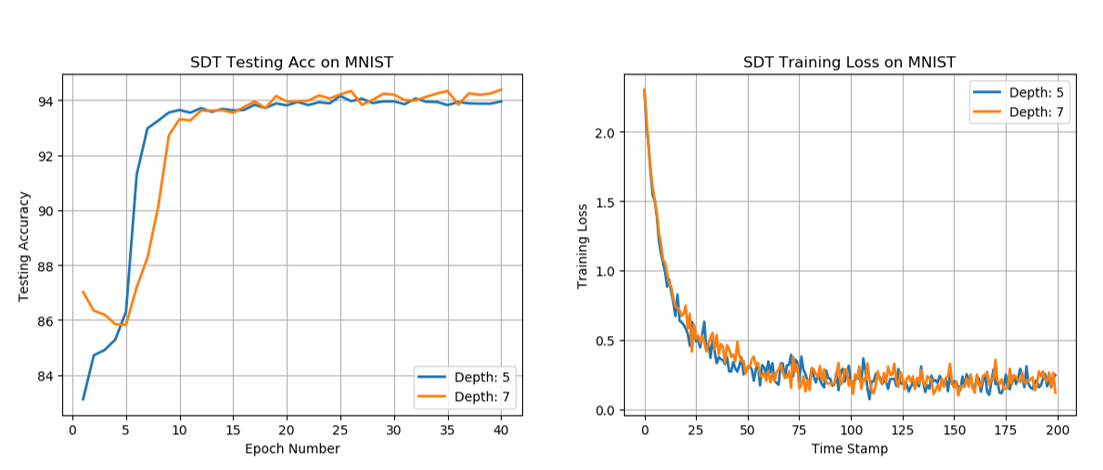This is the pytorch implementation on Soft Decision Tree (SDT), appearing in the paper "Distilling a Neural Network Into a Soft Decision Tree". 2017 (https://arxiv.org/abs/1711.09784).
Here I offer one demo on MNIST. To run the demo, simply type the following command:
python main.py
- Training loss suddenly turns into NAN
- [Reason] Sigmoid function used in inner nodes of SDT can be unstable during the training stage, as its gradient is much close to 0 when the absolute value of input is large.
- [Solution] Using smaller learning rate works.
- Exact training time
- [Setup] MNIST | Tree Depth: 5 | Epoch: 40 | Batch Size: 128
- [Result] Around 15min on Single RTX-2080ti
Please see main.py for details on how to use SDT. For personal use, one need to change following variables:
use_cuda: Actually, using CPU can be faster because you know...it's a treelearner_args: Parameters on SDT model, optimizer, etc.data_dir,train_loader,test_loader
Furthermore, main arguments in learner_args are:
depth: tree depth (root node is with depth 0)lamda: regularization coefficient defined in equation (5) from raw paper, which decayes exponentially with the depthlr,weight_decay: learning rate, weight decay in optimizer
If you are interested in implementations on SDT, please see SDT.py for details. Instead of formally defining the structure of inner node and leaf node, I directly use one linear layer with sigmoid activation to simulate all inner nodes for acceleration.
After training for 40 epochs with batch_size 128, the best testing accuracy using one SDT of depth 5, 7 are 94.15 and 94.38, separately (which is much close to the accuracy reported in raw paper). Related hyper-parameters are available in learner_args.
Better and more stable performance can be achieved by fine-tuning hyper-parameters. Below are the testing accuracy curve and training loss curve:
SDT is developed in python 3.6.5. Following are the name and version of packages used in SDT:
- pytorch 0.4.1
- torchvision 0.2.1
